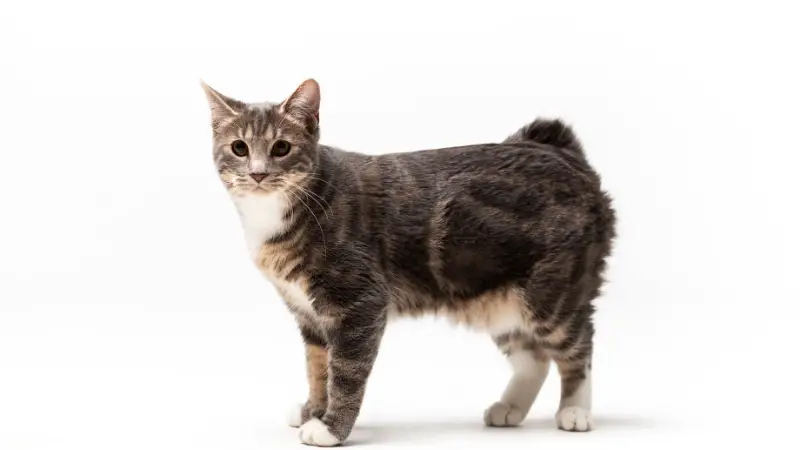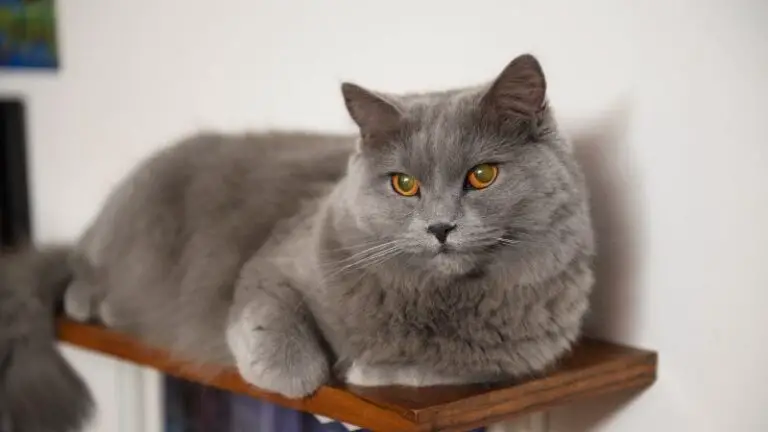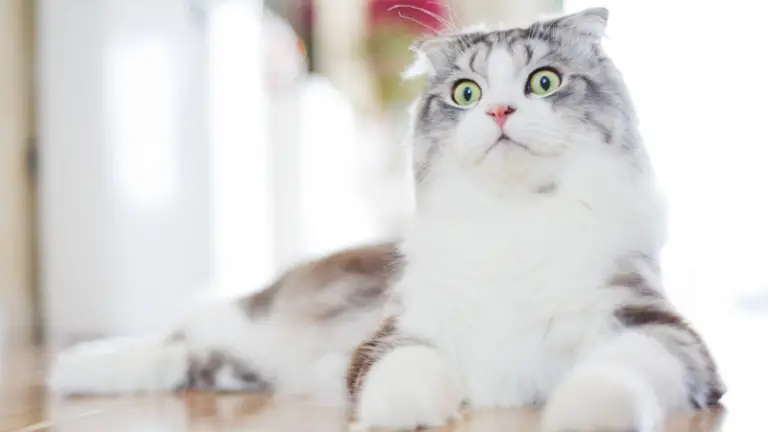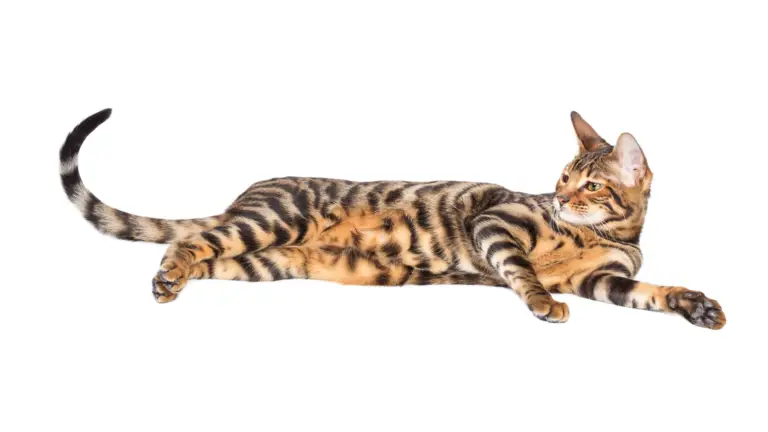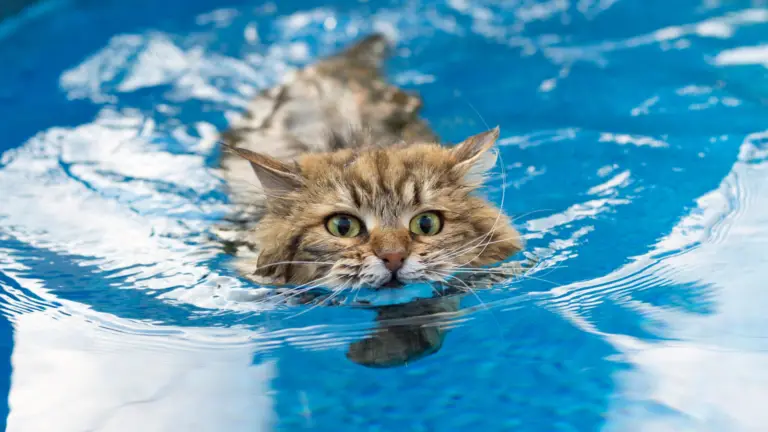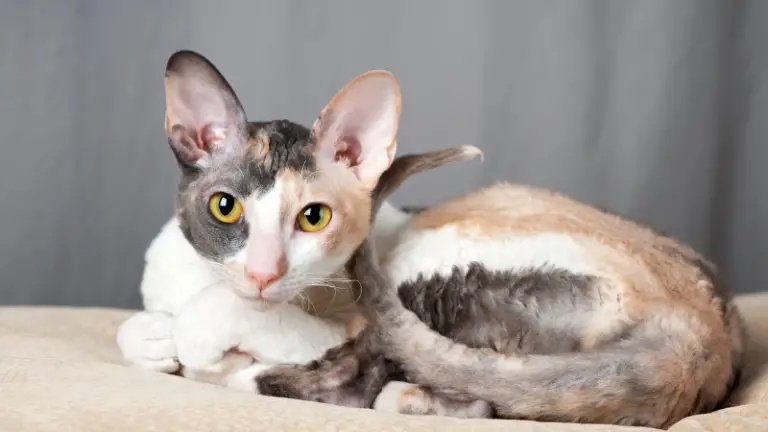JAPANESE BOBTAIL CAT PERSONALITY AND BREED (ALL YOU NEED TO KNOW)
Are you wondering about the Japanese Bobtail cat personality?
These extraordinary cats have inspired the Japanese tradition of positioning a ceramic ornament called Maneki Neko on the windows of homes and offices so that it is also clearly visible from the outside.
The Maneki Neko depicts precisely a cat with its paw raised in greeting and seems to bring a lot of luck.
At a glance, the Japanese Bobtail cat is an ancient Breed, able to live for a long time. In addition, the kittens are typically born premature, and the severed tail does not create health problems.
Let’s know more about the Japanese Bobtail cat personality and breed.
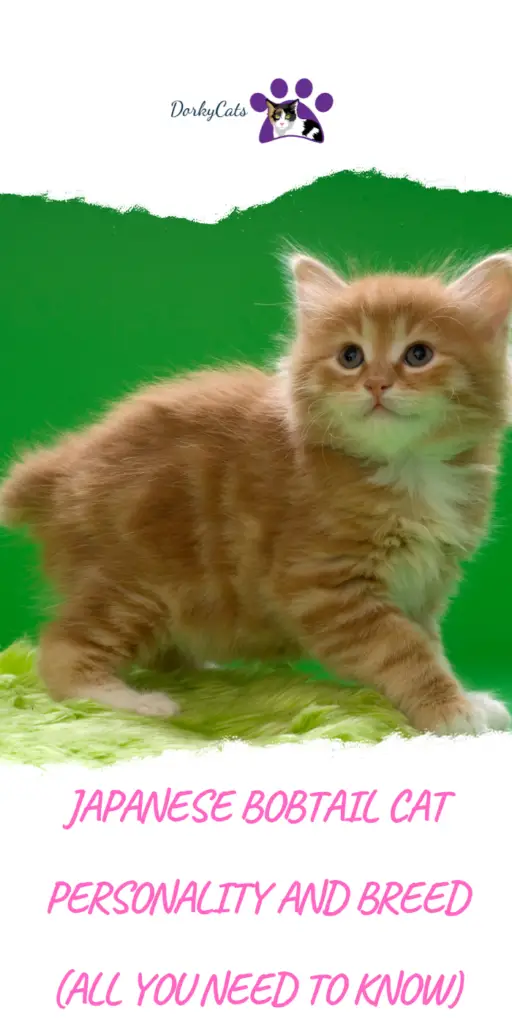
WHAT IS THE JAPANESE BOBTAIL CAT GENERAL ASPECT AND SIZE?
In Japan, the Japanese Bobtail is a tricolor variety, which is also the most widespread. This variety is called ” Mi-Ke,” which means “lucky.” In fact, this cat is considered an authentic good luck charm.
Many Japanese painters have immortalized the exotic charm of these cats in their works. The main peculiarity is the “pompon” tail, which is straight or curled but has no adverse effects on the cat’s spine.
The hind legs are slender and longer than the anterior ones, but generally, the difference is not visible because the legs often remain folded.
CHARACTERISTICS OF THE JAPANESE BOBTAIL CAT
| Characteristic | Description | Notes |
|---|---|---|
| In summary | Not so much widespread beyond the Japanese borders, especially in Europe | |
| Personality | Very friendly and adaptable, playful and loving | Ideal as a pet, above all, for those with children |
| Appearance | Really particular. The longhair variant has the semi-long coat | |
| In the house | It easily gets used to the home environment, becomes a truly agreeable companion | |
| Behavior | It is not advisable to always keep this cat at home, because he loves to go out on a patrol | Keeps the hunting instinct, especially for rodents |
| Grooming | It must be more frequent during moulting. However, this is not a problem, not even in the long-haired version | |
| Most common health problems | There are no major diseases. If it is often outdoors, beware of fleas | The severed tail is not leading to health problems |
| Size | Medium, between 2 and 5 kg | |
| Ears | large, round pointed, distant, and perpendicular to the head | |
| Eyes | Large and oval in shape | |
| Head | perfectly triangular in shape; long and straight nose | |
| Paws | Long and tapered; feet of medium to large and ovals | |
| Coat | Soft, silky, medium length, and slightly raised | |
| Allowed colors | All but the most common are white with dark spots scattered all over the body, especially on the tail, head, and ears |
AN ADVICEThe Japanese Bobtail is not to be confused with the Manx. However, the difference between the two cats can be seen in the appearance and because the tail is absent in the Irish breed.
The Japanese Bobtail has a triangular head. The shape of the head reminds an equilateral triangle, with big and well-spaced apart ears. The heterochromia constitutes an element
of further value.
THE COAT OF THE JAPANESE BOBTAIL CAT
All varieties of the Japanese Bobtail cat are accepted, apart from the color point and the Abyssinian type. The bicolor varieties are widespread (white is the predominant color), but the traditionally preferred coloration is the tortoiseshell known as “mi-ki.”
They are friendly cats that emit a wide variety of sounds. They love chasing balls and bringing them back to the master. In many respects, this breed represents the pet animal for excellence. In fact, those cats get along well with dogs and children.
Until 1968 they were known only in their country of origin; today, they are widespread in the United States but still relatively rare in Europe.
In addition, it is very rare to see the Japanese Bobtail at cat shows. The “wad” tail makes it look like a rabbit in the back.
WHAT IS THE HISTORY OF THE ABYSSINIAN?
Cats were imported to Japan from China over a thousand years ago. Initially, they performed the function of pets for the nobles, who often took them for a walk on a leash.
Later they revealed all their usefulness when an invasion of mice threatened to put the country on its knees, destroying even the precious texts written on rice paper.
Since effective rat poisoning had not yet been discovered, the cats were the only salvation and have held a special place in the Japanese culture ever since.
There are variants of the Japanese Bobtail. There are long and short hair types; the latter is more common, but the tail length (differently from Manx ) is identical in all types.
WHAT IS THE ORIGIN OF THE JAPANESE BOBTAIL?
Contrary to the name, this breed originates in exotic Chinese lands. Some documents dated back to 1000 AD speak of the presence in China of gifted cats with a particular mutation to the tail to give it an almost deformed appearance.
In particular, these cats were imported to Japan in the 11th century, where they are still considered a talisman, enough to be reproduced in statuettes and on postcards with the paw raised almost in the act to impart a blessing.
Actually, the first selections started in the United States, where some specimens,
in 1968, were introduced by the American military and conquered immediately many cat enthusiasts.
But, unfortunately, the Japanese Bobtail only arrived in Europe at the beginning of the eighties of the last century and, while being extraordinarily intelligent and fascinating, he did not find in the old continent the same success it had in America, where even the long-haired variety was selected.
In fact, to the exclusion of Japan and the United States, it remains an almost completely unknown breed.
JAPANESE BOBTAIL CAT PERSONALITY
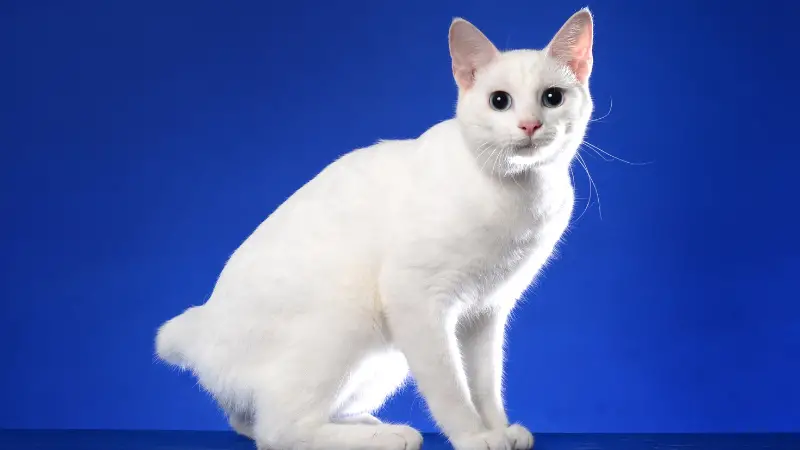
It certainly cannot be said that the Japanese Bobtail is an introverted cat: a lover
of the company of others and the people of the house and strangers, he has no problems sharing the affection between his masters and other cats and dogs.
He particularly likes to communicate and never misses an opportunity to show off his eloquence, modulating the voice in delicate vocalizations. His movements are as harmonious as those of a graceful dancer, and it is practically impossible not to be seduced by his elegant bearing.
The Japanese Bobtail loves to communicate with the master.
Lover of children, the Japanese Bobtail is a lively cat that fits well into life in an apartment, provided that you dedicate to him long play sessions when you come back from work. Like a good climber, he especially loves to snuggle up on the shoulders of the master.
The Japanese Bobtail, among other things, shows no difficulty traveling with his family. Another peculiarity of this cat is that he has no problem learning his name and responding promptly when he is called.
AN ADVICE
The Japanese Bobtail does not need expensive jigs to have fun. It is just necessary one of those balls that bounce to chase and bring back to the master.
HOW TO CARE FOR AND FEED THE JAPANESE BOBTAIL CAT
The Japanese Bobtail is a sturdy cat, does not suffer from particular health problems, and the kittens of this breed are earlier in development compared to other cats. The soft coat, long or short, does not needs special grooming.
It is enough to comb it once a week with brushes that are not too harsh. This cat can eat practically everything, even if it shows genuine reverence for fish, especially if fresh ( it can never miss from his diet).
MANEKI NEKO
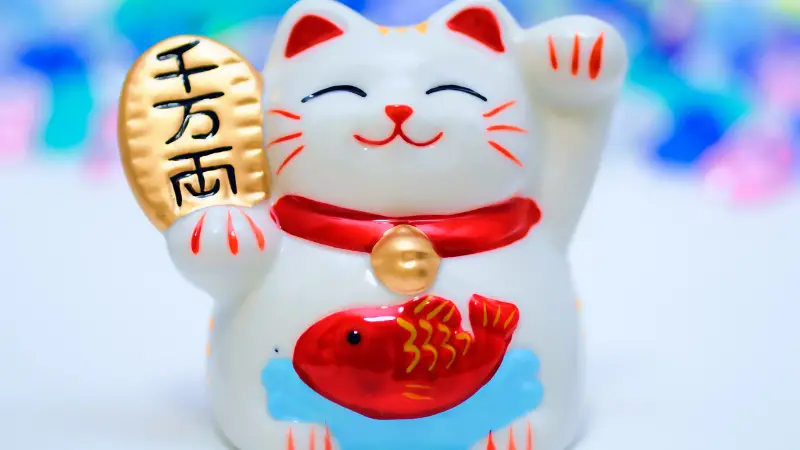
The name Maneki Neko literally means “cat beckoning,” which is known throughout Japan. Therefore, it is possible to find statuettes of various sizes and colors that reproduce the Japanese Bobtail with a raised paw throughout the country.
Each shop exhibits its Maneki Neko because it is said to bring good luck in business, but they can also see it at temples or in people’s houses to welcome guests.
FREQUENTLY ASKED QUESTIONS
What is the Japanese Bobtail cat price?
Japanese Bobtail cats are expensive, especially if you live outside the US or Japan. These cats can cost anything between $600 and $2000. The price depends on the purity of the cat breed, the age of the cat, and the breeder.
What is the Japanese Bobtail cat’s lifespan?
Japanese Bobtail cats can live up to 16 years of age. However, life expectancy can increase if those cats are adequately cared for, eat quality food and live in a proper environment.
Are Japanese Bobtails good pets?
Japanese Bobtail cats are good pets. They are lively, intelligent, affectionate, never intrusive, and even soft in their vocalization. In general, they get along with humans and other pets.
Are Japanese Bobtails playful?
Japanese Bobtail cats are playful cats and are known for their climbing abilities. They love to play fetch and play with other toys too.
Are Japanese Bobtail cats vocal?
Japanese Bobtail cats can vocalize, but their meows are known to be melodic and soft. They are not annoying or loud in their vocalization.
Are Japanese Bobtail cats aggressive?
Japanese Bobtail cats are not aggressive at all; they are a friendly breed that enjoys the company of humans, other cats, and even dogs.
Are Japanese Bobtail cats hyper?
Japanese Bobtail cats are lively and playful, but they are not hyperactive. They like to play and are active, but not too much.
Are Japanese Bobtails smart?
Japanese Bobtails are one of the most intelligent cat breeds. They can learn their names, fetch a ball, and do other tricks.
What is the difference between a Manx and a Japanese Bobtail?
The tail is the main difference between a Japanese Bobtail and a Manx cat. The Manx has no tail at all, while the Japanese Bobtail has a tiny tail resembling that of a rabbit.
Are Japanese Bobtail cats rare?
Japanese Bobtail cats can be considered rare outside Japan or US. This is because they are not yet so widespread in other countries.
Are Japanese Bobtails hypoallergenic?
There are many different ideas about the Japanese Bobtail Hypoallergenic qualities. Still, they are NOT hypoallergenic cats, although they can be considered as such due to the lack of undercoat and short fur.

